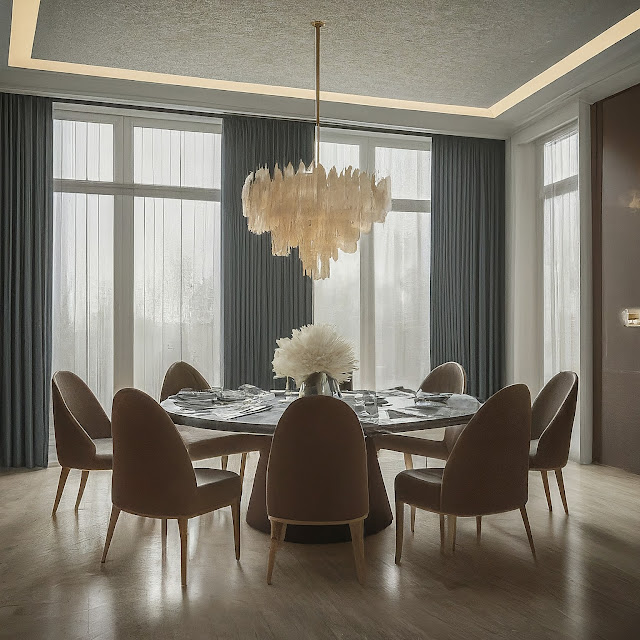Bauhaus Movement: How It Revolutionized Modern Design
Few art and design movements have had the global impact and lasting legacy of the Bauhaus. Born in Germany in the early 20th century, the Bauhaus was more than just a school—it was a revolutionary idea that reshaped architecture, design, art, and even everyday objects. Its influence still echoes in modern homes, offices, and products today.
What Was the Bauhaus Movement?
The Bauhaus was founded by architect Walter Gropius in 1919 in Weimar, Germany. His vision was radical: to unify art, craft, and technology into a new, functional approach to design. The movement emerged during a time of social and political upheaval after World War I and aimed to rebuild society through modern, accessible, and meaningful design.
The school moved to Dessau in 1925 and later to Berlin, but was forced to close by the Nazi regime in 1933. Despite its short lifespan, the Bauhaus left an indelible mark on global design culture.
Core Principles of Bauhaus Design
1. Form Follows Function
Bauhaus design emphasizes practicality. Objects and buildings were stripped of ornamentation and focused on usability, with aesthetics arising from structure and purpose.
2. Unity of Art and Industry
The Bauhaus bridged the gap between artists and industrialists. It embraced mass production and believed that good design should be affordable and accessible to all.
3. Geometric Simplicity
Designs favored clean lines, basic shapes, and primary colors. This simplicity made Bauhaus creations visually timeless and easy to reproduce.
4. Interdisciplinary Collaboration
Students and teachers from various disciplines—architecture, painting, sculpture, furniture-making, and more—collaborated, leading to innovative, integrated solutions.
Impact on Architecture and Interior Design
Bauhaus architecture introduced the world to the International Style: flat roofs, open floor plans, glass curtain walls, and minimal detailing. Iconic buildings like the Bauhaus Dessau and Barcelona Pavilion reflect this streamlined aesthetic.
In interior design, the Bauhaus promoted:
-
Functional furniture with tubular steel and modular components
-
Open living spaces with minimal clutter
-
Integrated design, where furniture, lighting, and layout worked in harmony
Influence on Modern Graphic Design
Bauhaus graphic design emphasized:
-
Bold typography (often sans-serif)
-
Asymmetrical layouts
-
Simple color schemes and geometric compositions
The use of grid systems and clarity in communication laid the foundation for modern editorial design, advertising, and web interfaces.
Legacy in Product and Industrial Design
Many everyday products owe their clean, user-friendly designs to Bauhaus ideals. Think of:
-
IKEA furniture
-
Apple’s minimalist product aesthetics
-
The classic Swiss watch
-
Mid-century modern chairs, like those by Marcel Breuer and Ludwig Mies van der Rohe
Their blend of functionality, simplicity, and mass appeal traces directly to Bauhaus principles.
Key Figures of the Bauhaus Movement
-
Walter Gropius – Founder and visionary architect
-
László Moholy-Nagy – Promoter of experimental photography and industrial design
-
Marcel Breuer – Creator of the Wassily Chair and pioneer of tubular steel furniture
-
Paul Klee & Wassily Kandinsky – Painters who shaped Bauhaus art education
-
Ludwig Mies van der Rohe – Architect of the famous phrase “less is more”
Why the Bauhaus Still Matters Today
In a world increasingly concerned with sustainability, efficiency, and accessibility, the Bauhaus vision is more relevant than ever. Its emphasis on function, economy, and elegance continues to influence contemporary design, from eco-housing to digital interfaces.
Designers today are re-embracing Bauhaus values by:
-
Creating multi-purpose furniture for small spaces
-
Designing user-centered tech products
-
Promoting accessible design for people of all abilities
Final Thoughts
The Bauhaus wasn’t just a movement—it was a manifesto for the future. By challenging traditions and blending art with modern needs, it gave us the foundation of modern design thinking. Whether in the sleek silhouette of a chair, the layout of a webpage, or the blueprint of a home, the Bauhaus spirit lives on.






_1.jpg)
_2.jpg)
_1.jpg)
_2.jpg)
_1.jpg)
_1.jpg)
_2.jpg)
_1.jpg)
_2.jpg)
_1.jpg)
_2.jpg)
_1.jpg)
_2.jpg)












.jpg)












